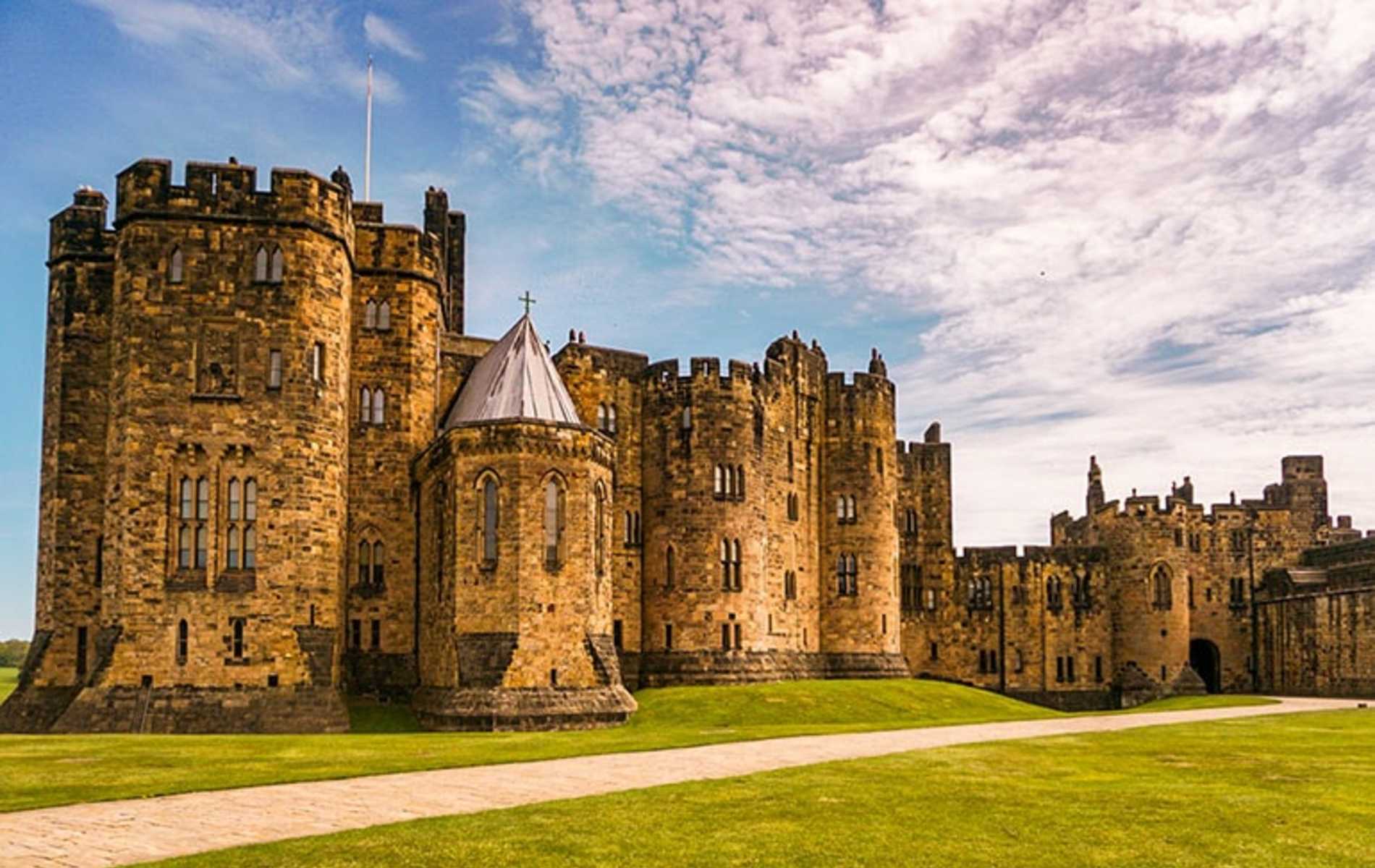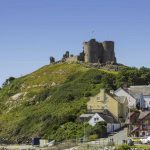This article is about Alnwick Castle. Alnwick castle is in the North East of England, it was originally a great motte-and-bailey castle. It was later transformed into a rectangular medieval castle with four large towers at its corners and two smaller ones.
Table of Contents
A Brief History of Alnwick Castle
Alnwick Castle was originally built as a motte-and-bailey castle during the 11th century. It is a rectangular medieval castle with four large towers at its corners and two smaller ones. Alnwick Castle was first built by the Normans during their invasion of England. It was initially owned by William the Conqueror but soon after passed down to his second son, who became known as Henry I—hence why this medieval castle was named Alnwick Castle.
Alnwick Castle featured in Harry Potter and the Philosophers Stone
Harry Potter and the Philosopher’s Stone was filmed at Alnwick Castle in the year 2000. The courtyards and baileys of Alnwick Castle were used to film Hogwarts students and staff going about their daily activities. If you recall, Harry and Ron crash-landed the Weasley’s flying car into the Inner Bailey! So the Alnwick Castle Hogwarts scenes attract a great deal of visitors.
Norman Style Church
The first building is the oldest, it is a plain Norman-style church. The second building was built in the 1380s and features two towers and a spire; the third building was built in 1450 and features two gables. It’s been said that this set-up originated from a plan to allow Alnwick Castle to be attacked at its weakest point while preventing Alnwick Castle from attacking St Michael’s Church at its weakest point.
The Square Keep
A square keep was first built on top of the mound during the 11th century. It was built from limestone and shale, it was seven storeys tall and had two sets of four windows on each side. The next significant change after this keep’s construction occurred about 150 years later, when Alnwick Castle was altered to make it more comfortable for living.
This included turning the top floor of the keep into a hall where people could sit and relax; it also included adding a new kitchen and a hall which could be used for feasts. It is unclear exactly when this happened but historians believe that Alnwick Castle returned to its original single-storeyed form in 1620. The castle has continued to be improved since then.
The castle keep is the landmark of Alnwick Castle; it has been used as a prison, a barracks and as a store for food. It is still owned by Alnwick Castle and is currently closed to the public. The Duke and Duchess of Northumberland live on the first floor of the keep, they also have offices on this floor.
The Moat Bridge
The Alnwick Castle bridge is a wooden bridge across a moat which links the keep with the walls. This is also one of only two bridges in England where you can walk along a section of what was once a Roman Road that connected London and York—the other is in York itself. The walls surrounding Alnwick Castle are also one of only five medieval stone walls still standing in England today; they can be found on the west side of Alnwick Castle and they’re about four metres tall.
The Outer Walls of Alnwick Castle
The outer walls of Alnwick Castle are lower than the ones that originally surrounded the castle—they were built in the early 15th century. The inner walls are about 5 metres high, they were built around 1425 and are slightly curved and tapered to prevent attackers from getting a good grip.
There was originally only one main entrance to Alnwick Castle but by 1350, there were three gates: Newcastle and London Gates on the east side and Carlisle Gate on the west side. The Carlisle Gate was later replaced by the Bloody Tower and New Castle Gate which was built in the mid-14th century.
The Five-Story Norman Tower
The Bloody Tower was built on top of a five-storey Norman tower, this was also where a prison would have been located during medieval times. The Alnwick Castle Dungeon is underneath the castle keep and it’s quite well preserved. It’s about 60 metres long, 5 metres high and about 3 metres wide but it’s not open to the public as it is still owned by Alnwick Castle.
Medieval uses of Alnwick Castle
The castle was mostly used for royal events in medieval times, it was a retreat for royalty while looking after their estates in England and Scotland. This continued into the 17th century when King James I held court at Alnwick Castle; he was known as being a fan of hunting so he often stayed there.
Alnwick Castle today
Today, Alnwick Castle is well known for being the home of the Duke and Duchess of Northumberland, who have been living there since 2004.
The castle is open to the public. It has been used as a place of entertainment for many famous people including members of the Royal family and other members of high society. More and more visitors come to see Alnwick Castle each year.
Further Reading on English Castles
If you love castles as much as I do, check out these amazing Lake District castles.




[…] © Britain’s Castles […]
[…] © Britain’s Castles […]